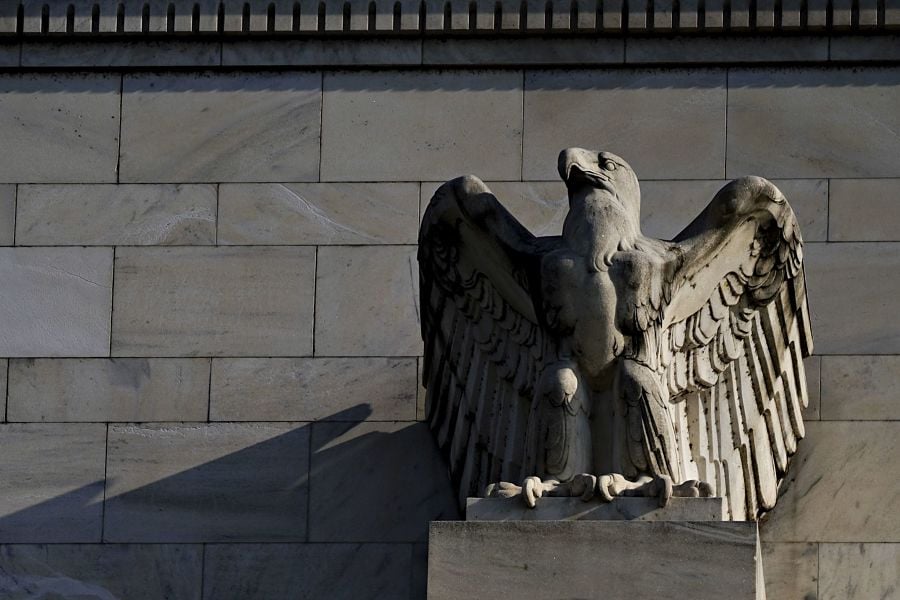

The well-telegraphed Federal Reserve interest-rate hike of a quarter point isn't expected to surprise anyone who's been paying attention, but financial advisers are still scrambling to adjust client portfolios for what lies ahead.
“The rate hike will lower bond prices for my clients, and this has already been happening over the last three months,” said Jordan Benold, founder of Benold Financial Planning.
“However, their bond funds will now purchase bonds with higher coupon payments so they will get more income,” Benold said. “We like to teach clients not to look at the value of their accounts but look at the income it is providing you through retirement, which is more important."
The move was highly anticipated, which is in line with the Fed’s goal to not surprise the financial markets, and represents the first interest rate hike since December 2018, a year that saw the Fed tighten monetary policy on four separate occasions.
Market watchers generally expect the March rate hike to be followed by at least three more this year as the Fed tries to tamp down inflation, which is at a 40-year high. At the same time, the Fed is trying to navigate a fragile economy and stock market that might respond negatively to the economic drag that higher interest rates typically bring.
Ryan Detrick, chief market strategist at LPL Financial, noted that it was only a month ago that the market was anticipating a 50-basis point hike in March, and he said higher interest rates don’t have mean the end of an economic growth cycle.
“Investors need to remember that Fed rate hikes usually happen near the middle of the economic cycle, with potentially years left of gains in stocks and the economy,” Detrick said. “In fact, a year after the first hike in a cycle has been fairly strong, [the market's been] higher a year later the past six times.”
Dennis Nolte, vice president of Seacoast Investment Services, said he has prepared client portfolios for the tightening cycle to come and the March hike is “already baked into the cake” as far as the financial markets are concerned.
Meanwhile, the S&P 500 Index, which is down more than 10% from the start of the year, was up 1.5% in midday trading Wednesday ahead of the Fed announcement.
“Anything sensitive to interest rate hikes, such as credit cards, will be affected, and we've prepped for that,” Nolte said. “If the Fed keeps raising rates, maybe six or seven times, they will help cause a recession, in our opinion, so we're already prepping for that by being more defensive in our holdings. And cash might actually have a yield if rates keep going up, but not nearly keeping pace with inflation.”
Jon Ulin of Ulin & Co. Wealth Management said he's been preparing for higher rates by adjusting fixed-income exposures.
“Last month we ratcheted down the average bond duration from 7 to 1.5 years in our clients’ balanced strategic portfolios for both growth and income models,” he said. “We are utilizing a barbell approach considering credit quality, duration and country exposure.”
Paul Schatz, president of Heritage Capital, is looking past the inevitable rate hike to a plan by the Fed to sell bonds off its balance sheet. “That has the ability to move the market, likely lower if they reveal it,” he said.
In terms of investing in the current market environment, Schatz said the table's set.
“This is the week I have been targeting for stocks to go up out of,” he said. “While there may be one more shot to the downside this month, the Q1 decline is largely or all over and Q2 should be very good for the bulls, recovering 50% to 75% of what was lost.”
Meanwhile, Tom Siomades, chief investment officer at AE Wealth Management, is already downplaying the Fed move as all sizzle and no steak.
“To me, this quarter-point rate hike is largely symbolic to show that there is somebody at the Fed,” he said. “With this inflation hiking over the past year, and all the excuses [the Biden administration] has used, I don’t know if the lights were even on at the Fed.”
Juxtaposing the Fed’s stated interest-rate target of 2% with the 8% level now facing consumers, Siomades said the March rate hike won’t even move the needle.
“They’re just not willing to raise rates enough to deal with this, so they’ll throw a quarter point at us and go to dinner,” he said. “My view is that the Fed will make a policy mistake because they’ve waited too long.”

Raymond James also lured another ex-Edward Jones advisor in South Carolina, while LPL welcomed a mother-and-son team from Edward Jones and Thrivent.

MyVest and Vestmark have also unveiled strategic partnerships aimed at helping advisors and RIAs bring personalization to more clients.

Wealth management unit sees inflows of $23 billion.

Deal will give US investment bank a foothold in lucrative European market.

New report examines the impact that the initiative has had on philanthropy.
Orion's Tom Wilson on delivering coordinated, high-touch service in a world where returns alone no longer set you apart.
Barely a decade old, registered index-linked annuities have quickly surged in popularity, thanks to their unique blend of protection and growth potential—an appealing option for investors looking to chart a steadier course through today's choppy market waters, says Myles Lambert, Brighthouse Financial.
